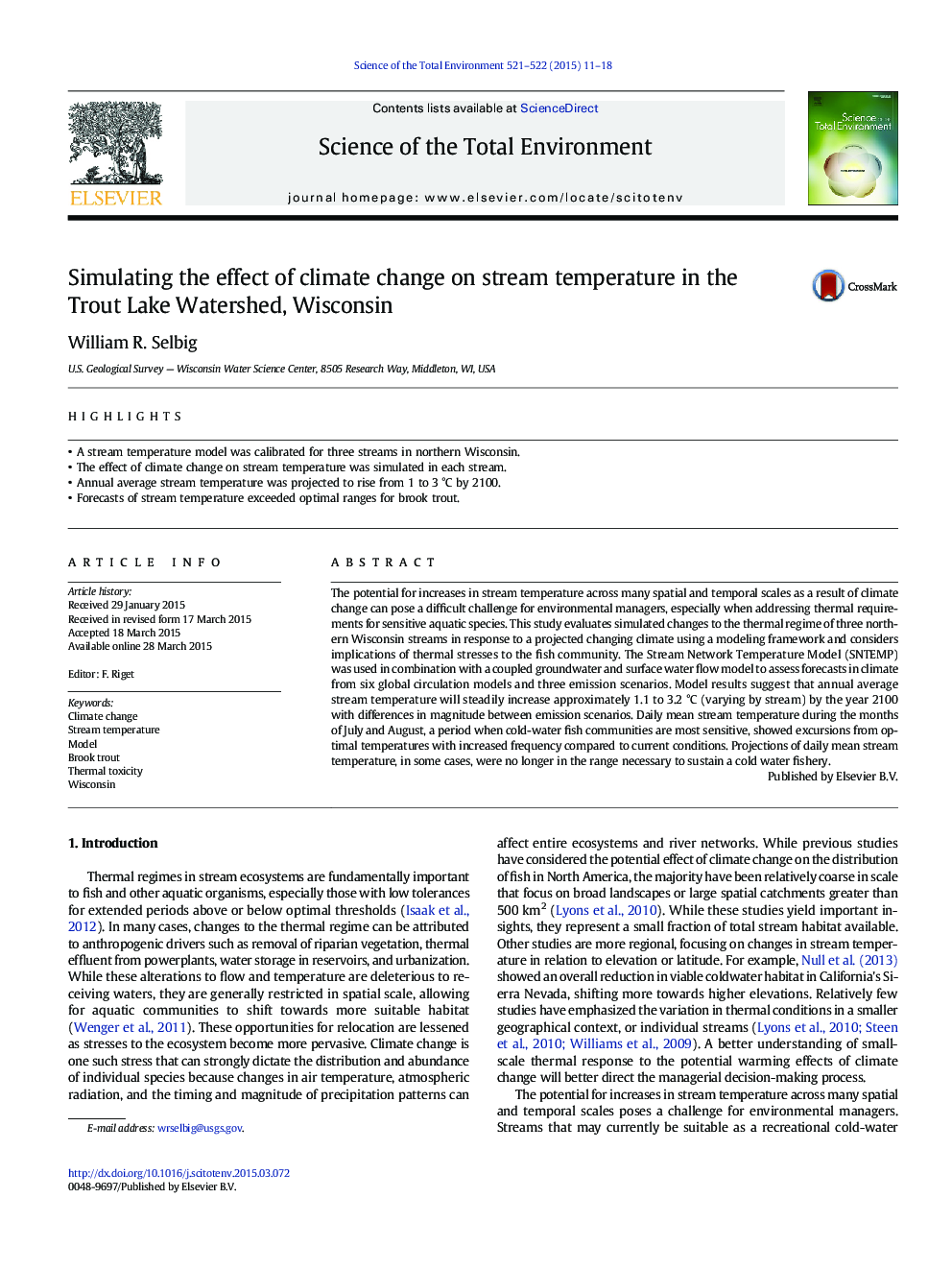| Article ID | Journal | Published Year | Pages | File Type |
|---|---|---|---|---|
| 6326552 | Science of The Total Environment | 2015 | 8 Pages |
Abstract
The potential for increases in stream temperature across many spatial and temporal scales as a result of climate change can pose a difficult challenge for environmental managers, especially when addressing thermal requirements for sensitive aquatic species. This study evaluates simulated changes to the thermal regime of three northern Wisconsin streams in response to a projected changing climate using a modeling framework and considers implications of thermal stresses to the fish community. The Stream Network Temperature Model (SNTEMP) was used in combination with a coupled groundwater and surface water flow model to assess forecasts in climate from six global circulation models and three emission scenarios. Model results suggest that annual average stream temperature will steadily increase approximately 1.1 to 3.2 °C (varying by stream) by the year 2100 with differences in magnitude between emission scenarios. Daily mean stream temperature during the months of July and August, a period when cold-water fish communities are most sensitive, showed excursions from optimal temperatures with increased frequency compared to current conditions. Projections of daily mean stream temperature, in some cases, were no longer in the range necessary to sustain a cold water fishery.
Related Topics
Life Sciences
Environmental Science
Environmental Chemistry
Authors
William R. Selbig,
